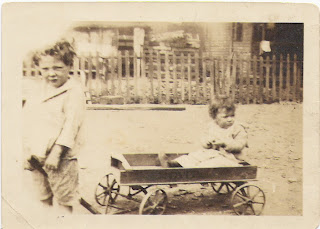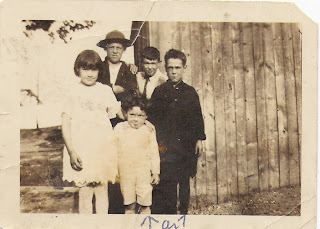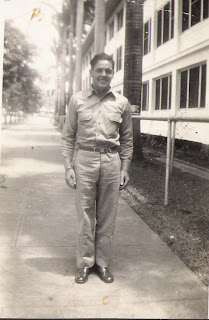Yarter
Yetta
Yettein found in Michigan
Yettaw also found in Michigan
Yetto found only in Troy, NY .............but the original name for all of them was Guertin.
The ancestor who left Québec for New York was JEAN BAPTISTE GUERTIN, born in St Hyacinthe on 30 December 1828. Relocated in Troy, NY, he can be found in the 1860 census and seems to have been employed in iron works as a "spikemaker" In the 1870 census he is employed as a carpenter. Here is his baptism record at Our Lady of the Rosary in St Hyacinthe:
 |
Baptism of Jean Baptiste Guertin , later Yetto at Our Lady of the Rosary, St Hyacinthe, QC
30 December 1828. |
Jean Baptiste Guertin was a direct descendant of Louis Guertin dit La Sabotier aka Louis the clog shoemaker. And if you are a Yetto, you are too!



For a long time, shoes were expensive items and people maintained them carefully in order to keep them as long as possible. This was particularly true for the common people. They viewed shoes as items of wealth, occasionally handing them on from one generation to the next, as demonstrated by certain inventories made after death. In 17th-century New France, French-style leather shoes were the prerogative of the rich bourgeois. The average peasant had to settle for moccasins – borrowed from Native fashion – and clogs. Clogs were very popular because they were waterproof, unlike leather shoes, and because they were inexpensive. They were worn alone or with shoes, to protect them in wet conditions. When worn alone, they were stuffed with straw for additional comfort. In cold weather, they were filled with hot embers for a few minutes, before being worn outside. Clogs were carved from a single piece of wood by clog makers*. Initially, in order to be close to their primary resource, clog makers would set up shop in shacks next to forests. These shacks then transformed into small work sites where clog makers plied their trade. For this reason, clog makers were often associated with logging operations, much like loggers or sawyers.
The word sabotage in French – which means to do work badly or intentionally destroy material or equipment – comes from the word “sabot” (“clog” in English)? In fact, in the 19th century, in order to protest against their poor working conditions in the factories, French workers used their clogs to block and break the machinery.Then the clog makers left the forest. Some opened workshops in the towns and villages while others became traveling craftsmen. The traveling craftsmen offered their services during their annual visit, in the homes they came across on their way. They brought clogs of various sizes with them, to shoe women, men and children. When they did not have the right size with them, they would take measurements and returned at a later date with clogs made to measure. How did the clog maker make clogs? He would proceed in stages. First, he would use an ax to cut sections of wood in various lengths, one length for each clog size. He would use the trunk of a freshly cut tree, since green wood was easier to work. Then, he would cut the lengths into blocks and each block would be used to make a single clog. The clog maker would carve the clog, which was held in place by a clamp, using a variety of chisels. He would shape the clog, and then hollow it out with an instrument known as a spoon. Occasionally, he would give rein to his imagination and engrave attractive designs on the clog. This was followed by drying. The clog had to be dried in the open air in order to harden the wood and make the clogs durable. The clog maker would stack the clogs so that the air would circulate well among them. The more sap the wood contained, the longer it took to dry. For example, clogs made from alder wood had to be dried for nine months before they could be worn. In addition to alder wood, the clog maker used a variety of other woods such as beech, birch, maple, black poplar, Scotch pine and walnut. Unlike the wooden shoes or clogs popular in France, Belgium and Holland, the people of Great Britain wore another type of clog that consisted of a leather shoe with a wooden sole made in much the same manner as clogs. In Quebec, this type of footwear became popular after the conquest, although people continued to wear clogs until the 19th century and even later.
In the Lac Mégantic region, clog makers could still be found in the 20th century. The men who made up the Great Recruit of 1653, included one clog maker, Louis Guertin dit Le Sabotier. He was originally from the Anjou region in France. It is not known whether he actually practiced his trade in New France.
Sources:
LANGLOIS, Michel. Montréal 1653. La Grande Recrue, Québec, Les Éditions du Septentrion, 2003, 268 p. Le Petit Larousse illustré, Paris, Larousse, 2002, 1786 p. POMERLEAU, Jeanne. Métiers ambulants d’autrefois, Montréal, Guérin, 1990, 467p. SEYMOUR, John. Métiers oubliés. Métiers d’autrefois, Paris, France Loisirs, 1985, 187 p.
I know this does not explain how Guertin changed into Yetto. Nonetheless, if you are a Yetto descendant reading this, I hope you find the information interesting. If you have information about the evolution of the name from Guertin to Yetto, please send that news on to me, FrancoAmerican Gravy. My father is also a descendant of Louis Guertin, the clog maker, through his son Pierre. The Yettos descended through Louis's son, Paul Guertin.
Postscript in 2023: Thank you to everyone who commented and emailed me about the Yetto-Yettaw-Yarter-Guertin name connection. Name variations, Anglicizations, and 'dit' names have haunted and stymied genealogists of Franco-American families. There is no single authority or reference as far as I can find, however here are links to some help:





































